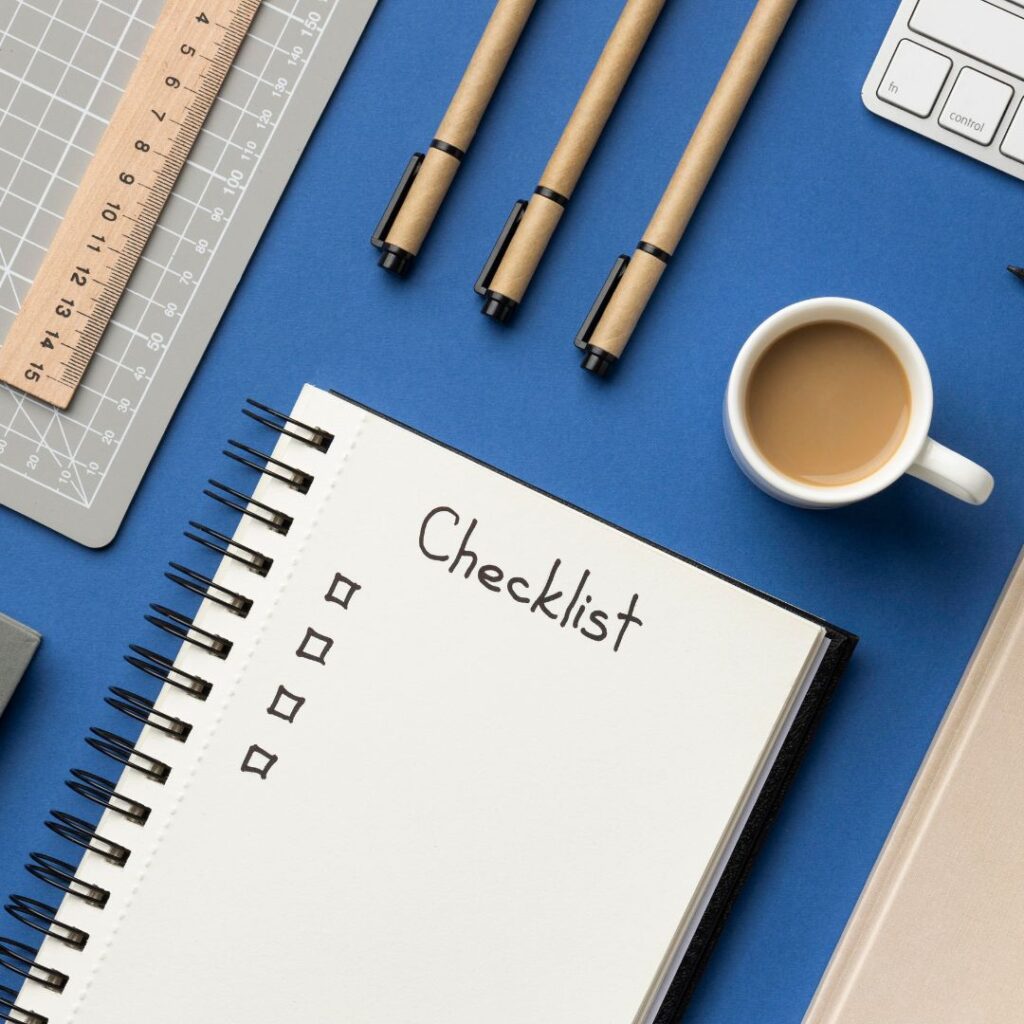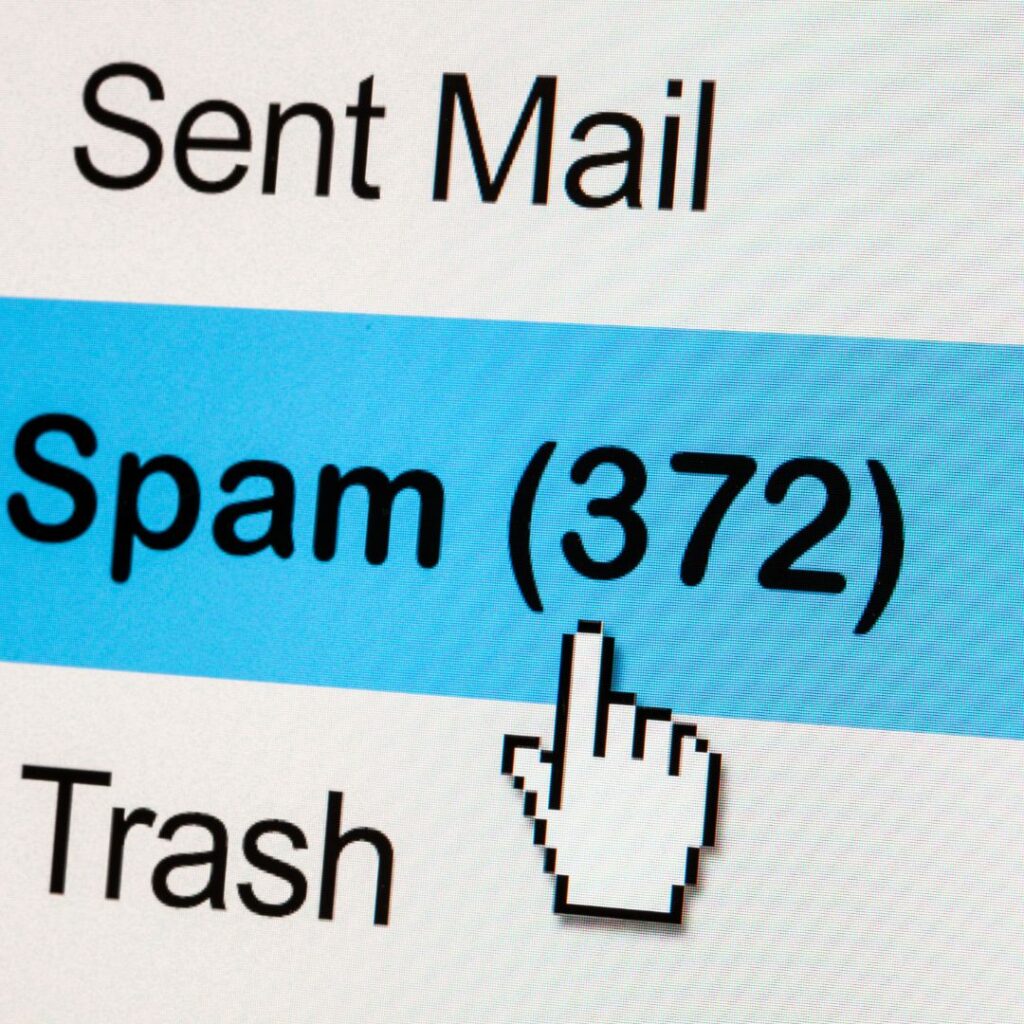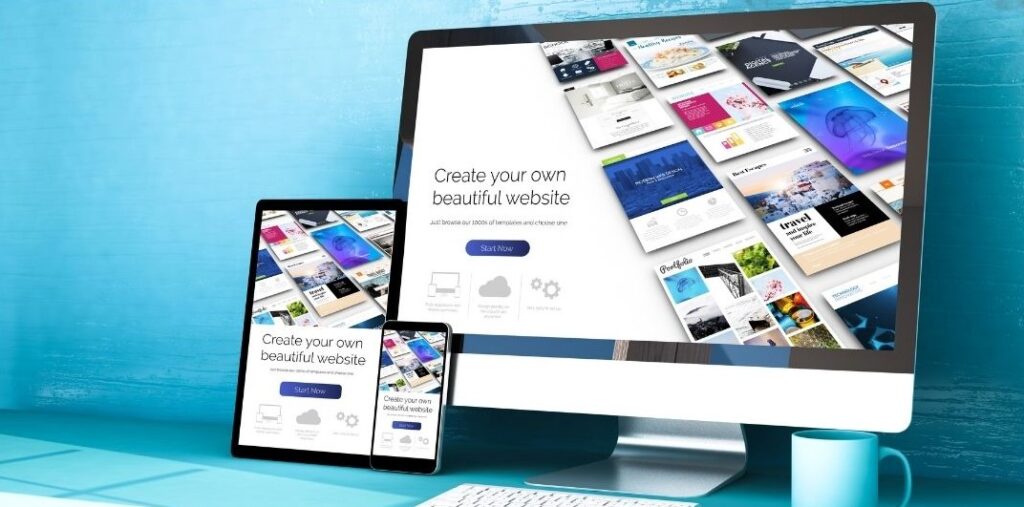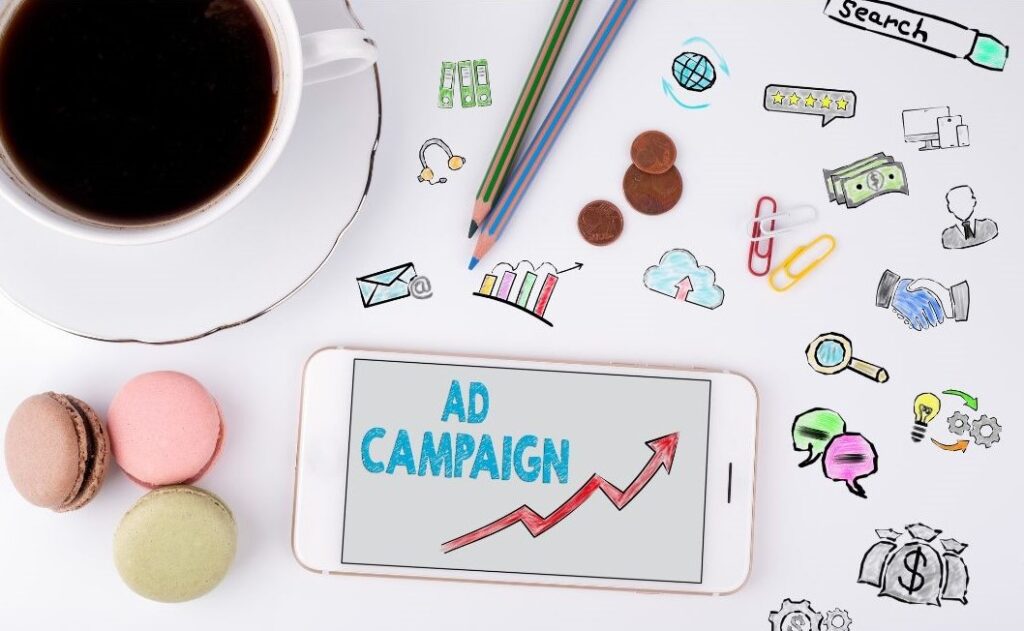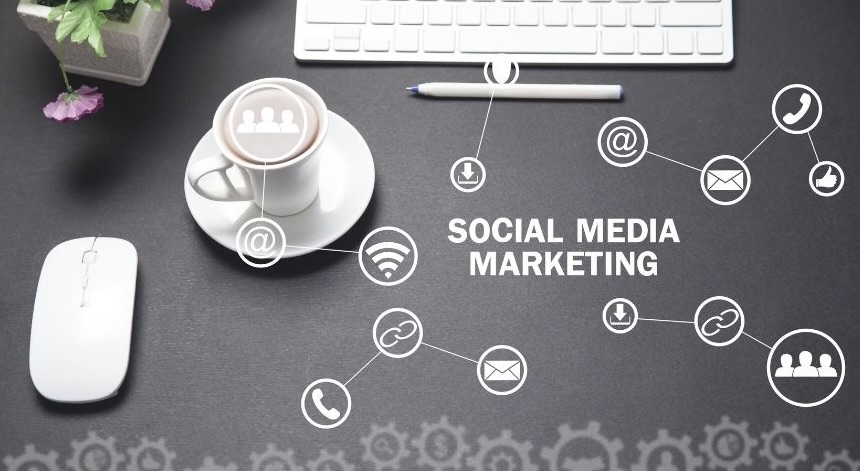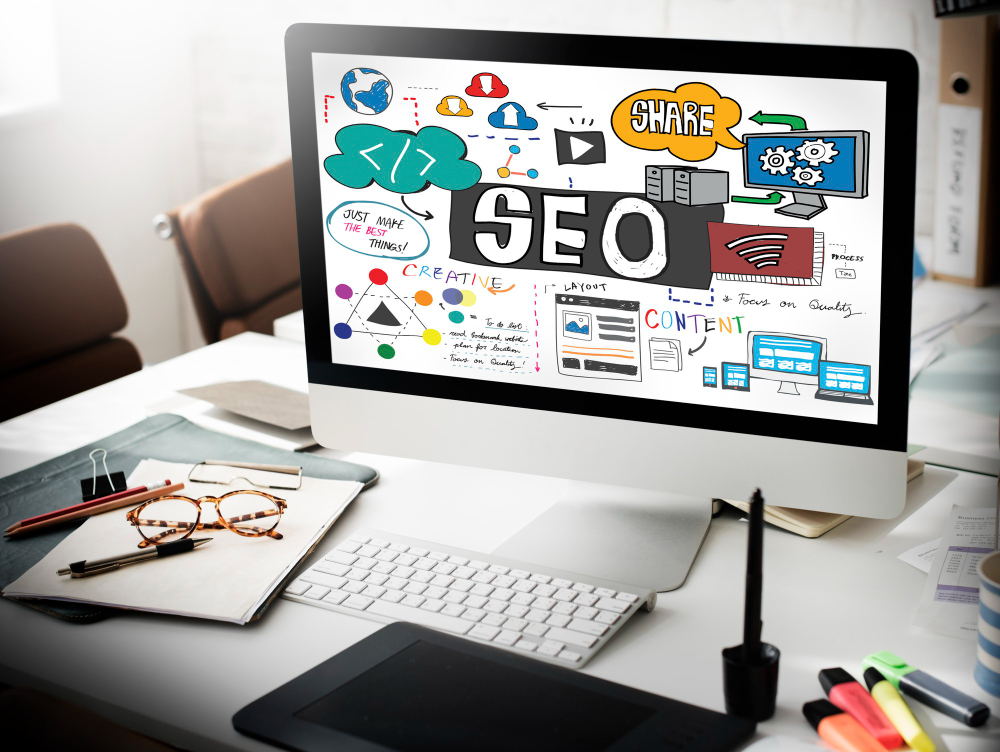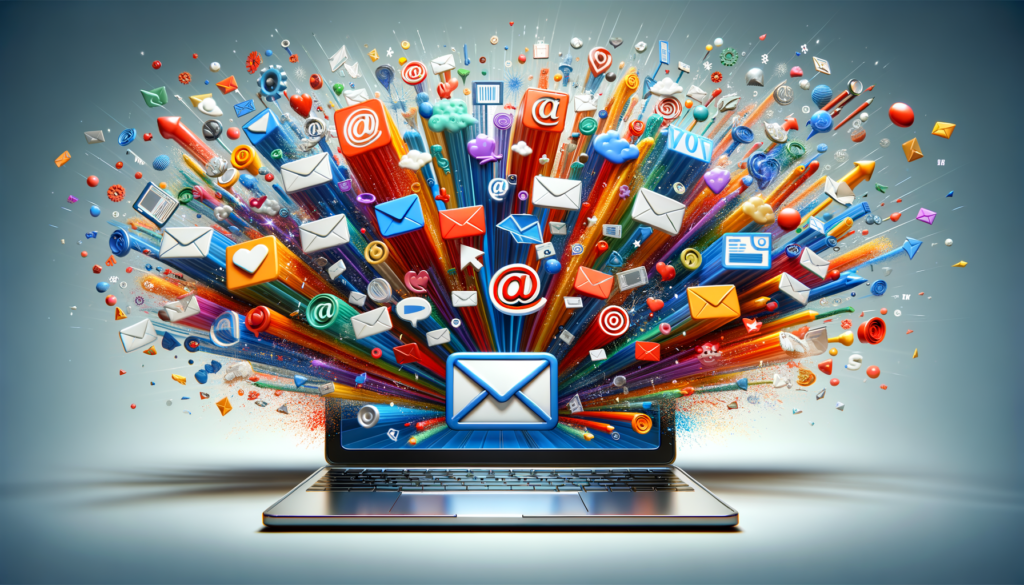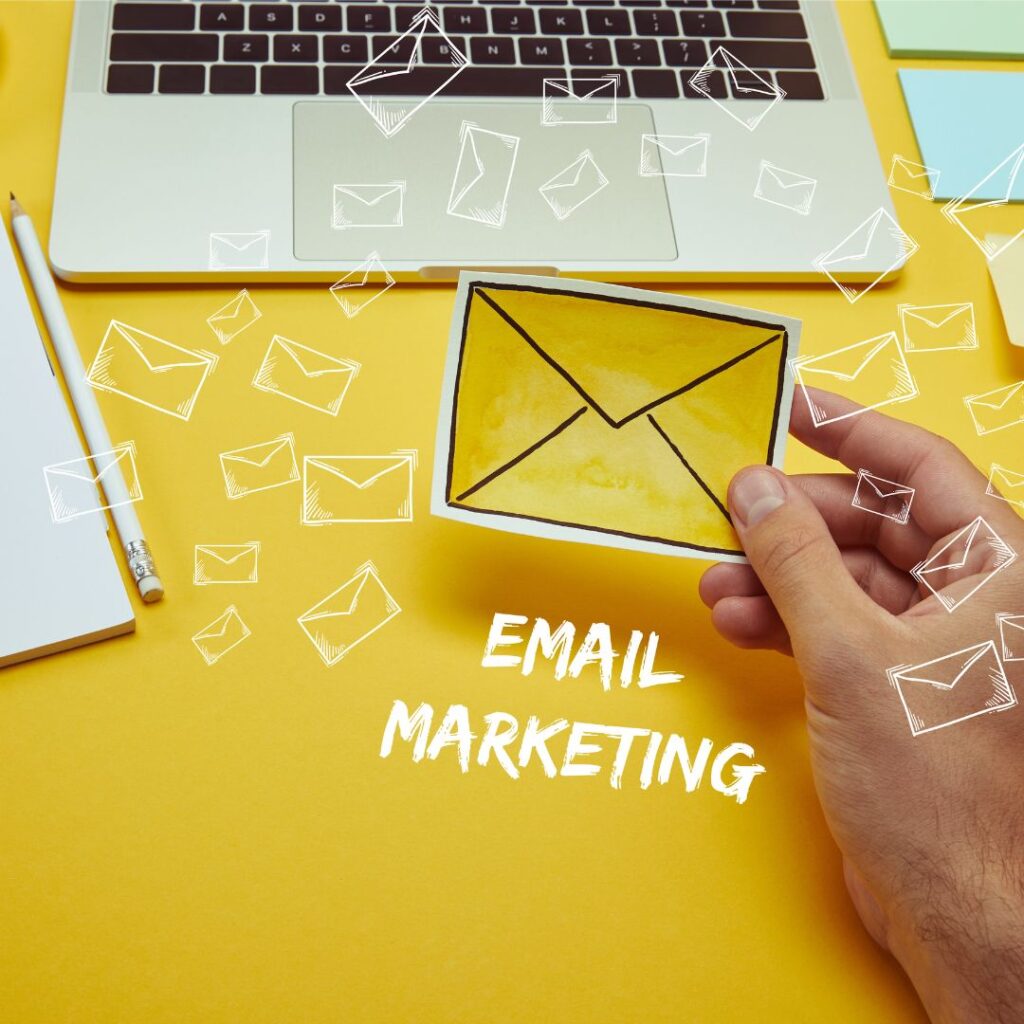Email marketing remains a cornerstone of digital marketing strategies, offering unmatched ROI and direct engagement with customers. This guide will help you navigate the essential components of successful email marketing, from starting strong to continuous optimization.
Email Marketing Key Takeaways
- Understand Email Marketing’s Value: Email marketing remains a powerful tool for businesses, offering high ROI and direct customer engagement.
- Starting Strong: Essential components to launch an effective email campaign include a clear strategy, compelling content, and consistent branding.
- List Building & Segmentation: Grow and segment your email list to ensure targeted and relevant outreach.
- Crafting Compelling Emails: Create engaging and effective email content that resonates with your audience.
- Performance Analysis: Track and analyze the success of your campaigns using key metrics.
- Optimization Techniques: Continuously improve your email marketing efforts through A/B testing and data-driven decisions.
What is Email Marketing?
Email marketing is a digital strategy that involves sending targeted messages to prospects and customers via email. It aims to build relationships, boost business, and convert readers into loyal customers. Email types include:
- Newsletters and promotional offers
- Transactional messages
- Customer surveys
- Engagement and information sharing
Effective email marketing engages audiences, provides value, and drives business growth through personalized communication
Why is Email Marketing Important?
Email marketing offers a direct line to your audience, right in their inbox. Here are a few reasons why it’s crucial for businesses:
- Cost-Effective: Unlike traditional marketing methods like flyers or billboards, email marketing is super budget-friendly. You don’t have to break the bank to get your message across. And with the right tools, you can automate much of the process.
- Direct Communication: Emails land straight in your customers’ inboxes, providing a direct line of communication. This makes sharing updates, promotions, and exciting news about your business easier.
- Targeted Marketing: With email marketing, you can tailor your messages to specific groups of customers, making your marketing efforts more effective and personal.
- Measurable Results: Email marketing platforms provide detailed analytics, allowing you to track open rates, click-through rates, and conversions. This data helps you understand what messaging is working for your audience and can even assist you in refining your strategy and improve your campaigns over time.
 Benefits of Email Marketing
Benefits of Email Marketing
Email marketing stands out as a powerhouse in the digital marketing toolkit, offering a unique combination of reach, personalization, and cost-effectiveness. When executed well, it can drive significant results for businesses of all sizes. Here are the key benefits that make email marketing an indispensable strategy:
- Increased Reach and Engagement: Email marketing allows you to reach a large audience quickly. Personalized emails can increase engagement by making your customers feel valued and understood.
- Boosts Sales and Conversions: Targeted email campaigns can lead to higher sales and conversions by presenting your audience with relevant offers and information at the right time.
- Builds Strong Customer Relationships: Regularly sending valuable content helps build customer trust and loyalty. Over time, this can lead to increased customer retention and brand advocacy.
- Enhances Brand Awareness: Consistent email communication keeps your brand at the forefront of your customers’ minds, increasing the likelihood they will think of you when they need your products or services.
- Encourages Repeat Business: Sending special promotions and exclusive offers to your email list encourages repeat purchases from existing customers, which can be more cost-effective than acquiring new customers.
Now that you understand the powerful benefits of email marketing, it’s time to put this knowledge into action. Launching an effective email marketing campaign might seem daunting, but with the right approach, it’s a manageable and rewarding process. To help you get started on the right foot, we’ve created a comprehensive checklist that will guide you through setting up and launching your email marketing strategy. This step-by-step checklist will ensure you cover all the essential elements as you embark on your email marketing journey.
The Ultimate Email Marketing Startup Checklist
Use this comprehensive checklist to guide you through setting up and launching your email marketing strategy. Check off each item as you complete it to ensure you’re covering all the essential elements.
Choose an Email Service Provider (ESP)
Research different ESP options (e.g., Zoho Campaigns, Mailchimp, Constant Contact, ActiveCampaign)
Compare features, pricing, and scalability
Select and sign up for an ESP that fits your business needs and budget
Build Your Email List
Create sign-up forms for your website
Develop a lead magnet (e.g., ebook, webinar, discount code)
Set up email collection during customer purchases
Promote your email list on social media channels
Implement a process for regular list cleaning and maintenance
Plan Your Content Strategy
Create a content calendar for the next 3 months
Define the types of emails you’ll send (e.g., welcome sequence, newsletters, promotions, abandon cart, etc)
Identify key dates and stages for your customer journey
Plan email topics in each sequence
Plan your email frequency
Plan for content personalization
Write Your Email Sequences
Welcome Sequence
Ensure to write your welcome sequence. This sequence helps build a relationship with your reader.
Write an immediate thank you/confirmation email
Create follow-up emails introducing your brand and value proposition
Include a call-to-action in each email
Lead Nurturing Sequence
Write emails for each stage, providing valuable content
Include relevant offers or upsells at appropriate stages
Re-engagement Sequence (for inactive subscribers)
Create content reminding subscribers of your value
Include a special offer to encourage re-engagement
Promotional Sequences
Write emails introducing new products or services
Create a sequence for special sales or events
Develop emails for seasonal or holiday campaigns
Post-Purchase Sequence
Write a thank you email for the purchase
Create emails with product usage tips or best practices
Develop cross-sell or upsell email(s) for complementary products
Write a review request email
Transactional Email Sequence (if applicable)
Create order confirmation emails
Develop shipping and delivery update emails
Write payment confirmation emails
Abandoned Cart Sequence (for e-commerce)
Create a reminder email shortly after cart abandonment
Develop a follow-up email with potential solutions to objections
Write a final email, possibly including a special offer
General Best Practices for All Sequences
Ensure each email has a clear purpose and call-to-action
Maintain consistent branding and voice across all emails
Personalize content where possible
Optimize subject lines and preview text for each email
Design Email Templates
Create or customize a template that aligns with your brand identity
Ensure your template is mobile-responsive
Incorporate your brand colors and logo
Design a clear hierarchy with headings and subheadings
Select appropriate images or graphics for your emails
Implement Personalization and Segmentation
Set up subscriber data collection for personalization
Define criteria for segmenting your list (e.g., demographics, purchase history)
Create separate lists or tags for different segments
Develop targeted content ideas for each segment
Set Up Automation
Create automation for your welcome email series for new subscribers
Develop a lead nurturing drip campaign
Set up automation for re-engagement emails for inactive subscribers
Implement birthday or anniversary automated emails
For e-commerce: Set up abandoned cart reminder email automation
Establish Analytics and Optimization Processes
Define your email marketing goals and objectives
Identify key performance indicators (KPIs) to track
Set up tracking for open rates, click-through rates, and conversions
Plan your first A/B test (e.g., subject line, send time)
Create a process for regular performance review and strategy refinement
Ensure Compliance and Follow Best Practices
Review relevant email regulations (e.g., CAN-SPAM Act, GDPR)
Include clear unsubscribe options in all email templates
Create a privacy policy explaining how you collect and use subscriber data
Develop guidelines to avoid spam triggers in content and subject lines
Launch Your First Campaign
Write and design your first email
Send a test email to yourself and team members
Make any necessary adjustments based on test results
Schedule or send your first campaign
Monitor initial results and gather feedback
Ongoing Management
Schedule regular content creation sessions
Set up a system for ongoing list management
Plan periodic review and optimization of your email strategy
Stay informed about email marketing trends and best practices
Remember, email marketing is an iterative process. Start with the basics and continually refine your approach based on performance data and subscriber feedback. Good luck with your email marketing journey!
Mastering Email Marketing: Crafting Campaigns and Building Your List
Email marketing remains a powerful tool for businesses to connect with their audience. By understanding key principles and implementing strategic practices, you can create campaigns that resonate with your subscribers and drive results. Let’s explore the essential elements of effective email marketing.
Crafting Effective Email Campaigns
Know Your Audience
Understanding your audience is the foundation of successful email marketing. Consider your subscribers’ demographics, interests, and behaviors. Are they young professionals, busy parents, or tech enthusiasts? Tailoring your message to your audience’s specific needs will make your emails more relevant and engaging.
Building and Segmenting Your Email List
Building a quality email list is fundamental to your email marketing success. It’s about attracting the right audience who are genuinely interested in your offerings.
Strategies for Building Your List
- Create compelling signup offers: Provide value in exchange for email addresses, such as: • Discount codes • Exclusive content • Free guides or ebooks
- Optimize your website: • Place signup forms prominently • Use exit-intent popups strategically • Highlight the benefits of subscribing
- Leverage social media: • Promote your email list across platforms • Share snippets of email content to showcase value
- Host contests or giveaways: • Require email addresses for entry • Ensure prizes align with your target audience’s interests
Remember, quality trumps quantity. Focus on attracting subscribers who are likely to engage with your content and become loyal customers.
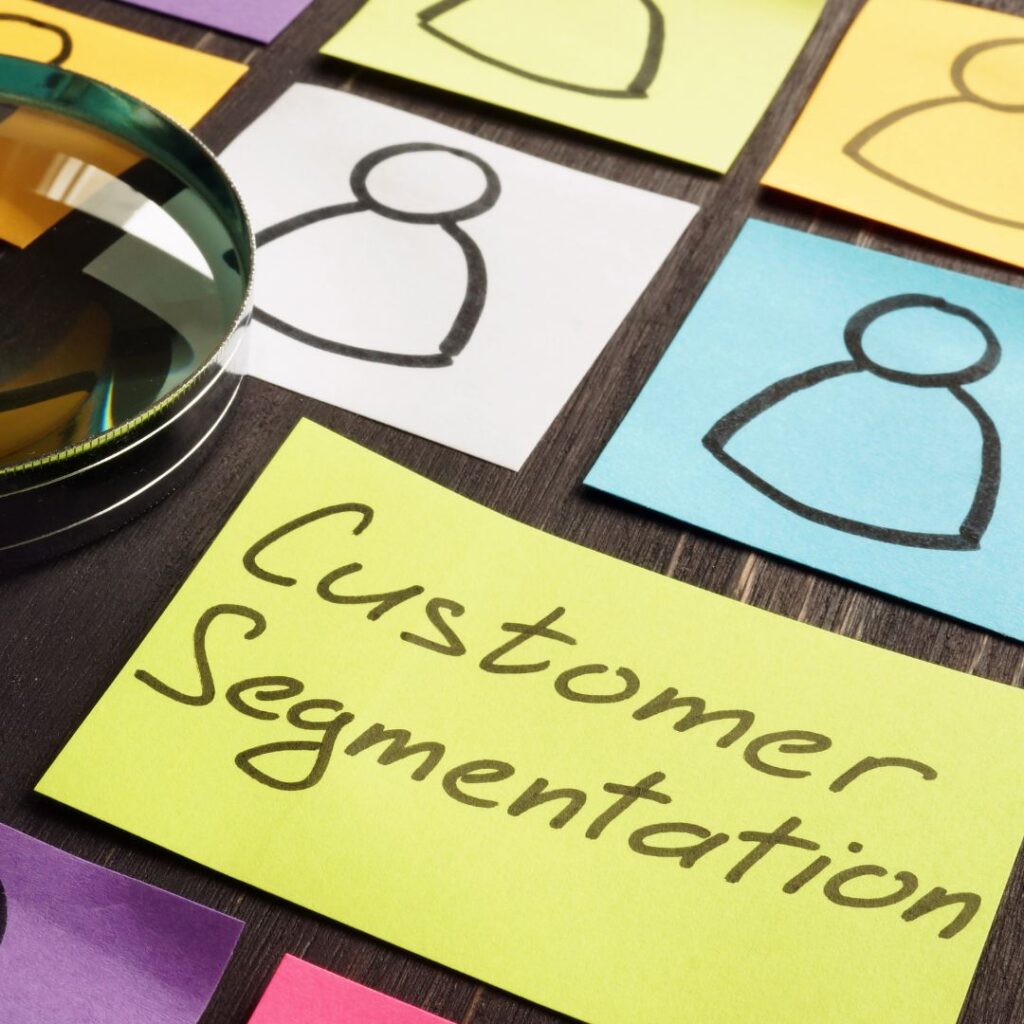 The Power of Segmentation
The Power of Segmentation
Segmentation involves dividing your email list into smaller, targeted groups. This allows for more personalized and effective communication. Segmented campaigns often achieve higher open rates, better click-through rates, and lower unsubscribe rates.
Ways to segment your list include:
- Demographics (age, gender, location)
- Past purchases or interactions
- Engagement level (active vs. inactive subscribers)
- Content preferences (e.g., newsletters vs. promotional offers)
Most email marketing platforms offer built-in segmentation tools, making it easier to implement this strategy.
By focusing on crafting effective campaigns and building a quality, segmented email list, you’ll be well on your way to email marketing success. Remember to continuously analyze your results and refine your approach based on what resonates best with your audience.
Write Compelling Subject Lines
Your subject line is crucial—it’s the first thing recipients see and often determines whether they open your email. Here are tips for creating eye-catching subject lines:
- Keep it concise: Aim for 40-50 characters. For example, instead of “Our Biggest Sale of the Year Is Happening This Weekend!”, try “48-Hour Flash Sale: Up to 70% Off”.
- Be specific: Offer a preview of the email’s content. Compare “Newsletter” to “5 Time-Saving Tips for Busy Professionals”.
- Create urgency: Use time-sensitive language when appropriate. “Last Day: Free Shipping on All Orders” is more compelling than “Free Shipping Available”.
- Avoid spam triggers: Steer clear of words like “free” or excessive punctuation. Instead of “FREE!!! Limited Time Offer!!!”, try “Limited-Time Discount: Save on Your Next Purchase”.
- Use numbers: Numbers can grab attention. “3 Ways to Boost Your Productivity” is more specific than “Productivity Tips”.
- Ask questions: Engage curiosity. “Ready to transform your marketing strategy?” can be intriguing.
- Personalize: Include the recipient’s name or location. “John, Your Custom Report Is Ready” feels more personal than a generic subject line.
Remember to A/B test your subject lines to see what resonates best with your audience.
Personalize Your Content
Personalization goes beyond using the recipient’s name. Consider these strategies:
- Segment your email list for targeted content: Divide your list based on demographics, purchase history, or engagement level. For example, send different content to new subscribers versus long-time customers.
- Mention previous purchases or interactions: “Based on your recent purchase of running shoes, you might like these moisture-wicking socks.”
- Recommend products based on browsing history: “We noticed you were looking at our coffee makers. Here are our top 3 bestsellers.”
- Send birthday or anniversary wishes: “Happy Birthday, Sarah! Enjoy 20% off your next purchase as our gift to you.”
- Use dynamic content: Change specific parts of your email based on subscriber data. For instance, show different product recommendations to men and women.
- Personalize based on location: “Enjoy free shipping to your city, Chicago!”
- Tailor content based on past engagement: Send re-engagement campaigns to inactive subscribers with subject lines like “We miss you! Here’s 15% off to welcome you back.”
Remember, the goal of personalization is to make each subscriber feel that the email was crafted specifically for them. This increases relevance and engagement, leading to better open rates, click-through rates, and conversions.
Create Engaging Content & Keep It Simple
Your email content should provide value to your readers. Here’s how to make your content more engaging and effective:
- Use a clear call-to-action (CTA):
- Make it obvious what you want readers to do next.
- Use action-oriented language like “Shop Now,” “Download Your Free Guide,” or “Reserve Your Spot.”
- Place your CTA prominently, ideally above the fold.
- Example: Instead of “Click here for more information,” try “Discover Your Perfect Vacation Package Today!”
- Include eye-catching visuals:
- Use high-quality images, videos, and infographics to enhance your message.
- Ensure visuals are relevant to your content and brand.
- Optimize image sizes to prevent slow loading times.
- Example: For a cooking newsletter, include appetizing photos of finished dishes or short video clips of cooking techniques.
- Keep it concise:
- Stick to the point to maintain reader interest.
- Use short paragraphs and bullet points for easy scanning.
- Aim for a word count between 50-125 words for most marketing emails.
- Example: Break down a long paragraph about product features into a bulleted list of key benefits.
- Provide valuable information:
- Offer insights, tips, or exclusive content to your subscribers.
- Focus on solving problems or addressing needs relevant to your audience.
- Use a mix of educational and promotional content.
- Example: A fitness brand might include a “Workout of the Week” alongside product promotions.
- Use a compelling subject line and preheader:
- Ensure your subject line accurately reflects the email content.
- Use the preheader text to expand on the subject line and entice opens.
- Example: Subject: “Your Summer Wardrobe Essentials” Preheader: “Plus, get 20% off your first purchase!”
- Personalize content:
- Use subscriber data to tailor content to individual interests or behaviors.
- Example: “Based on your recent purchase, we think you’ll love these complementary products…”
- Tell a story:
- Use narrative elements to make your content more engaging and memorable.
- Example: Share a customer success story or the inspiration behind a new product.
Remember, the key is to provide value in every email. Whether it’s through informative content, exclusive offers, or engaging stories, make sure your subscribers feel rewarded for opening your emails.
Optimize for Mobile
With over half of all emails opened on mobile devices, mobile optimization is crucial. Here’s how to ensure your emails are mobile-friendly:
- Use responsive design:
- Implement a layout that automatically adjusts to different screen sizes.
- Use a single-column layout for easy mobile viewing.
- Example: A two-column desktop layout should collapse into a single column on mobile.
- Employ larger fonts for easy reading:
- Use a minimum font size of 14px for body text.
- Make headlines larger and bolder to create a clear hierarchy.
- Example: Body text at 16px, subheadings at 20px, and main headlines at 24px.
- Create clear, tappable calls-to-action:
- Make CTAs at least 44×44 pixels to ensure they’re easily tappable on touchscreens.
- Leave plenty of white space around CTAs to prevent accidental clicks.
- Example: A “Shop Now” button should be large enough for a thumb to tap easily without hitting nearby elements.
- Optimize images for mobile:
- Use smaller file sizes to ensure quick loading times.
- Consider using scalable vector graphics (SVGs) for logos and icons.
- Example: Compress a 1MB product image to 200KB without significant quality loss.
- Keep subject lines short:
- Aim for 30-40 characters to ensure full visibility on mobile screens.
- Example: “Summer Sale: Up to 50% Off” instead of “Our Biggest Summer Sale Event: Discounts Up to 50% Off Storewide”
- Preview text optimization:
- Use preview text to complement your subject line and encourage opens.
- Keep it under 90 characters to ensure visibility on most mobile devices.
- Example: Subject: “Your Order is Confirmed” Preview: “Track your package and see our recommendations for your next purchase”
- Simplify navigation:
- Reduce the number of menu items or use a hamburger menu for mobile.
- Ensure all links and buttons are easily clickable on a small screen.
- Example: Replace a full navigation bar with a simple “Menu” button that expands when tapped.
- Test your emails on various devices before sending:
- Use email testing tools to preview your email on different devices and email clients.
- Send test emails to yourself and colleagues with different devices.
- Example: Test your email on an iPhone, an Android device, and a tablet to ensure consistent rendering.
By optimizing your emails for mobile, you’ll ensure a seamless experience for all your subscribers, regardless of the device they’re using. This can lead to higher engagement rates and better overall performance of your email campaigns.
Keep Your List Clean
Maintaining a clean email list is crucial for the success of your email marketing campaigns. A clean list ensures better deliverability, higher engagement rates, and more accurate campaign metrics. Here are key strategies for keeping your list in top shape:
- Remove inactive subscribers: Regularly remove subscribers who haven’t opened your emails in 3-12 months. This will depend on your business model.
- Implement double opt-in: Use a confirmation email to verify new subscribers, reducing the risk of invalid emails.
- Handle bounces promptly: Remove or correct email addresses that consistently bounce.
- Encourage subscribers to update their information: Provide an easy way for subscribers to update their email address and preferences.
By consistently cleaning your list, you’ll improve your sender reputation, increase engagement rates, and potentially lower your email marketing costs.
With strategies for crafting compelling campaigns and building a quality email list now in your toolkit, it’s time to turn our attention to a crucial aspect of email marketing success: measurement and improvement. Even the most well-crafted campaigns can benefit from ongoing analysis and optimization. In the next section, we’ll dive into the world of email marketing analytics, exploring how to measure the effectiveness of your efforts and make data-driven decisions to continuously enhance your email marketing performance.
Analyzing and Optimizing Email Performance
After launching your email campaigns, the next crucial step is to analyze and optimize their performance. This process ensures that your efforts are effective and continuously improving.
Why Analyzing Email Performance Matters
Email analytics are essential for several reasons:
- Measure Success: Understand what’s working and what’s not in your campaigns.
- Improve Engagement: Fine-tune your content to make it more engaging for your audience.
- Boost ROI: Optimize your campaigns to maximize return on investment.
Without analytics, you’re essentially operating in the dark, unable to make data-driven decisions to improve your email marketing strategy.
Key Metrics to Monitor
To gauge the effectiveness of your email campaigns, focus on these key metrics:
- Open Rate: The percentage of recipients who open your email. This metric indicates how compelling your subject lines are.
- Click-Through Rate (CTR): The percentage of recipients who click on links within your email. A higher CTR suggests your content is resonating with your audience.
- Conversion Rate: The percentage of recipients who complete a desired action, such as making a purchase or signing up for a webinar.
- Bounce Rate: The percentage of emails that couldn’t be delivered. A high bounce rate may indicate issues with your email list quality.
- Unsubscribe Rate: The percentage of recipients who opt out of your email list after receiving an email. This metric can signal if your content isn’t meeting subscribers’ expectations.
Tips for Optimizing Your Email Campaigns
Once you’ve gathered data on your email performance, it’s time to put that information to use. Here are several strategies to help you optimize your campaigns and achieve better results.
Embrace A/B Testing
This powerful technique allows you to compare different versions of your emails to see what resonates best with your audience. Test various aspects such as subject lines, email designs, call-to-action (CTA) buttons, and sending times. By systematically experimenting with these elements, you can identify the most effective combinations for engaging your subscribers.
Segment Your Audience
Break down your email list based on demographics, purchase history, and engagement levels. This approach allows you to tailor your messages to specific groups, increasing relevance and engagement. For example, you might send different content to new customers versus long-time loyal patrons, or adjust your messaging based on past purchase behaviors.
Optimize for Mobile
With a significant portion of emails now opened on mobile devices, it’s crucial that your messages are mobile-friendly. Use responsive design to adapt your layout to different screen sizes, keep your content concise for easy reading on smaller screens, and make sure your CTAs are easily tappable on touchscreens.
Keep It Concise
In today’s fast-paced world, brevity is key. Make your emails short and to the point, using clear and compelling CTAs to guide your readers’ actions. Prioritize the most important information, placing it prominently in your email. Remember, a focused message is often more effective than a lengthy one.
Continuously Track and Iterate
Regularly monitor your metrics to understand what’s working and what isn’t. Make data-driven adjustments to your strategies based on these insights. Stay updated on email marketing trends and best practices to ensure your approach remains current and effective.
Remember, successful email marketing is about continuous improvement. Take the time to understand your metrics, experiment with different strategies, and consistently refine your approach. With patience and persistence, you’ll see improved results and may even find the process enjoyable and rewarding. By applying these optimization techniques, you’ll be well on your way to creating more engaging, effective email campaigns that drive results for your business.
While understanding the principles and strategies of email marketing is essential, seeing how these concepts apply in real-world scenarios can provide invaluable insights. To illustrate the practical application and potential impact of effective email marketing, let’s examine a case study that demonstrates how one business transformed its email marketing approach with remarkable results.
Case Study: Brand Lift 360 Elevates Client Email Marketing
Email marketing can be challenging for many businesses. Brand Lift 360 has a proven track record of guiding companies to success in this domain. Let’s explore a recent success story and the lessons learned.
Client Challenge
In the competitive landscape of digital marketing, a local shop found itself struggling to make an impact through email. Despite boasting a loyal customer base, their email campaigns were falling flat, with disappointingly low open rates and minimal click-throughs. The shop’s owners recognized the potential of email marketing to boost their online presence and enhance customer engagement, but they were at a loss on how to turn their underperforming campaigns around. They needed a strategy to cut through the noise of crowded inboxes and reconnect with their audience effectively.
Brand Lift 360’s Approach
Brand Lift 360 tackled this challenge with a comprehensive, three-pronged approach. First, they dove deep into understanding the client’s needs, thoroughly assessing the shop’s goals, current email performance metrics, and target audience characteristics. This foundational step ensured that every subsequent action was aligned with the client’s unique situation and objectives. Next, the team developed a tailored strategy that focused on audience segmentation, dividing the email list based on customer behavior, purchase history, and demographics. This segmentation allowed for the creation of personalized, highly relevant content for each group. The strategy also emphasized crafting compelling subject lines to boost open rates and including clear, persuasive calls-to-action in each email. Finally, in the execution phase, Brand Lift 360 implemented this strategy with meticulous attention to detail. They continuously monitored performance and utilized A/B testing to optimize various elements including subject lines, images, and content. This data-driven approach allowed for real-time refinements, ensuring that each email sent was more effective than the last.
Results
The campaign yielded impressive results:
- 50% increase in open rates
- 40% boost in click-through rates
- 30% growth in online sales
Key Takeaways
- Understand and segment your audience for targeted messaging.
- Personalization is crucial for engagement.
- Continuous testing and optimization drive significant improvements.
This case study demonstrates that with the right strategy and execution, email marketing can dramatically increase engagement and drive sales.
Elevating Your Email Marketing Strategy
Whether you’re just starting or looking to improve your existing email marketing efforts, here’s a roadmap to success:
1. Set Clear Goals
- Define specific, measurable objectives (e.g., increasing sales, boosting engagement, growing your subscriber list).
- Align email marketing goals with overall business objectives.
2. Choose the Right Tools
- Invest in a reliable email marketing platform (e.g., Mailchimp, Constant Contact, HubSpot).
- Consider features like automation, segmentation, and analytics when selecting a platform.
3. Experiment and Learn
- Conduct regular A/B tests on subject lines, content, and send times.
- Track performance and continuously refine your approach based on data.
4. Ensure Compliance
- Adhere to email marketing regulations (e.g., CAN-SPAM Act, GDPR).
- Obtain explicit consent from recipients and provide easy opt-out options.
5. Leverage Local Engagement
- Incorporate local events, partnerships, or customer stories in your emails.
- Personalize content to reflect your community’s interests and values.
6. Utilize Analytics
- Monitor key metrics such as open rates, click-through rates, and conversion rates.
- Use tools like Google Analytics to understand how email campaigns impact overall website traffic and conversions.
7. Continuous Learning
- Stay updated on email marketing trends and best practices.
- Participate in industry webinars, follow marketing blogs, and join local business groups.
8. Consider Professional Help
- If you’re feeling overwhelmed, consider partnering with email marketing experts.
- Agencies like Brand Lift 360 can provide specialized knowledge and support to elevate your campaigns.
9. Network and Collaborate
- Connect with other local businesses to share insights and potentially collaborate on marketing initiatives.
- Participate in community events to build relationships and gather content ideas.
Remember, successful email marketing is an ongoing process of refinement and optimization. By consistently applying these strategies and learning from your results, you’ll develop increasingly effective campaigns that resonate with your audience and drive business growth.
Your Email Marketing Journey Starts Now
As we’ve explored throughout this guide, email marketing is a powerful tool that can significantly impact your business growth and customer relationships. From crafting compelling subject lines to segmenting your audience, from personalizing content to analyzing performance, each element plays a crucial role in your email marketing success.
Remember these key takeaways:
- Know your audience and tailor your content to their needs and interests.
- Craft attention-grabbing subject lines to improve open rates.
- Personalize your emails beyond just using the recipient’s name.
- Regularly clean and segment your email list for better targeting.
- Continuously analyze and optimize your campaigns based on performance data.
- Stay compliant with email marketing regulations and best practices.
Email marketing is not a one-time effort, but an ongoing process of learning, testing, and refining. As you implement these strategies, you’ll gain valuable insights into what works best for your unique audience.
Whether you’re just starting out or looking to elevate your existing email marketing efforts, the time to act is now. Begin by implementing one or two strategies from this guide, then gradually incorporate more as you become comfortable. Remember, even small improvements can lead to significant results over time.
Don’t be afraid to experiment, learn from both successes and failures, and most importantly, keep your subscribers’ needs at the forefront of your strategy. With patience, persistence, and the knowledge you’ve gained from this guide, you’re well-equipped to create email campaigns that engage your audience, drive conversions, and ultimately grow your business.
Ready to transform your email marketing? Take the first step today. Your future success starts with the next email you send!
Contact Brand Lift 360 for email marketing services that are tailored to your business.
Email Marketing FAQs
1. What is email marketing? Email marketing is the process of sending commercial messages to a group of people via email. These messages can include promotions, updates, and valuable content.
2. Why is email marketing important? Email marketing is crucial for building relationships with prospects, leads, and customers. It offers a high return on investment and helps businesses stay connected with their audience.
3. How do I build an email list? Build an email list by offering valuable content or incentives in exchange for email addresses, using sign-up forms on your website, and promoting your list through social media.
4. What is list segmentation? List segmentation involves dividing your email list into smaller groups based on specific criteria like demographics, purchase history, or engagement level to send more targeted and relevant messages.
5. How often should I send emails? The frequency of emails depends on your audience and the type of content. Generally, a consistent schedule, such as weekly or bi-weekly, helps maintain engagement without overwhelming subscribers.
6. What types of emails should I send? Common types of emails include newsletters, promotional offers, product updates, event invitations, and personalized recommendations.
7. How do I craft effective email content? Effective email content should be clear, concise, and engaging. Use compelling subject lines, personalized greetings, valuable information, and strong calls to action.
8. What are some best practices for email design? Best practices include using a responsive design, maintaining a clean and simple layout, incorporating images and visuals, and ensuring easy navigation.
9. How can I improve email deliverability? Improve deliverability by using a reputable email service provider, keeping your email list clean, avoiding spammy language, and personalizing your emails.
10. How do I measure the success of my email campaigns? Measure success using key metrics such as open rates, click-through rates, conversion rates, and unsubscribe rates.
11. What is A/B testing in email marketing? A/B testing involves sending two versions of an email to a small segment of your audience to determine which version performs better, then sending the winning version to the rest of your list.
12. How can I optimize my email marketing strategy? Optimize your strategy by regularly analyzing performance data, testing different elements, personalizing content, and staying up-to-date with industry trends.

